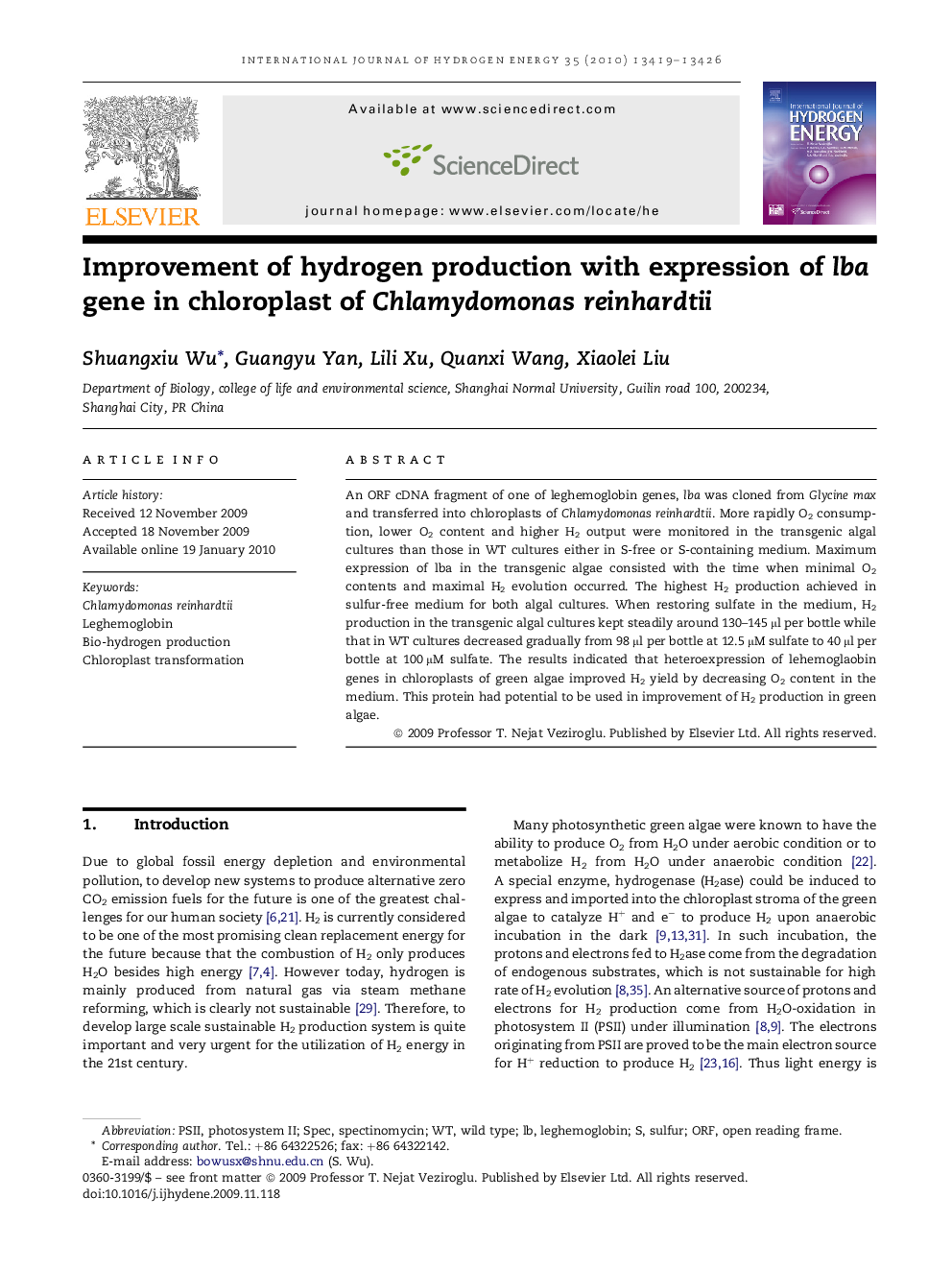| Article ID | Journal | Published Year | Pages | File Type |
|---|---|---|---|---|
| 1282708 | International Journal of Hydrogen Energy | 2010 | 8 Pages |
An ORF cDNA fragment of one of leghemoglobin genes, lba was cloned from Glycine max and transferred into chloroplasts of Chlamydomonas reinhardtii. More rapidly O2 consumption, lower O2 content and higher H2 output were monitored in the transgenic algal cultures than those in WT cultures either in S-free or S-containing medium. Maximum expression of lba in the transgenic algae consisted with the time when minimal O2 contents and maximal H2 evolution occurred. The highest H2 production achieved in sulfur-free medium for both algal cultures. When restoring sulfate in the medium, H2 production in the transgenic algal cultures kept steadily around 130–145 μl per bottle while that in WT cultures decreased gradually from 98 μl per bottle at 12.5 μM sulfate to 40 μl per bottle at 100 μM sulfate. The results indicated that heteroexpression of lehemoglaobin genes in chloroplasts of green algae improved H2 yield by decreasing O2 content in the medium. This protein had potential to be used in improvement of H2 production in green algae.
